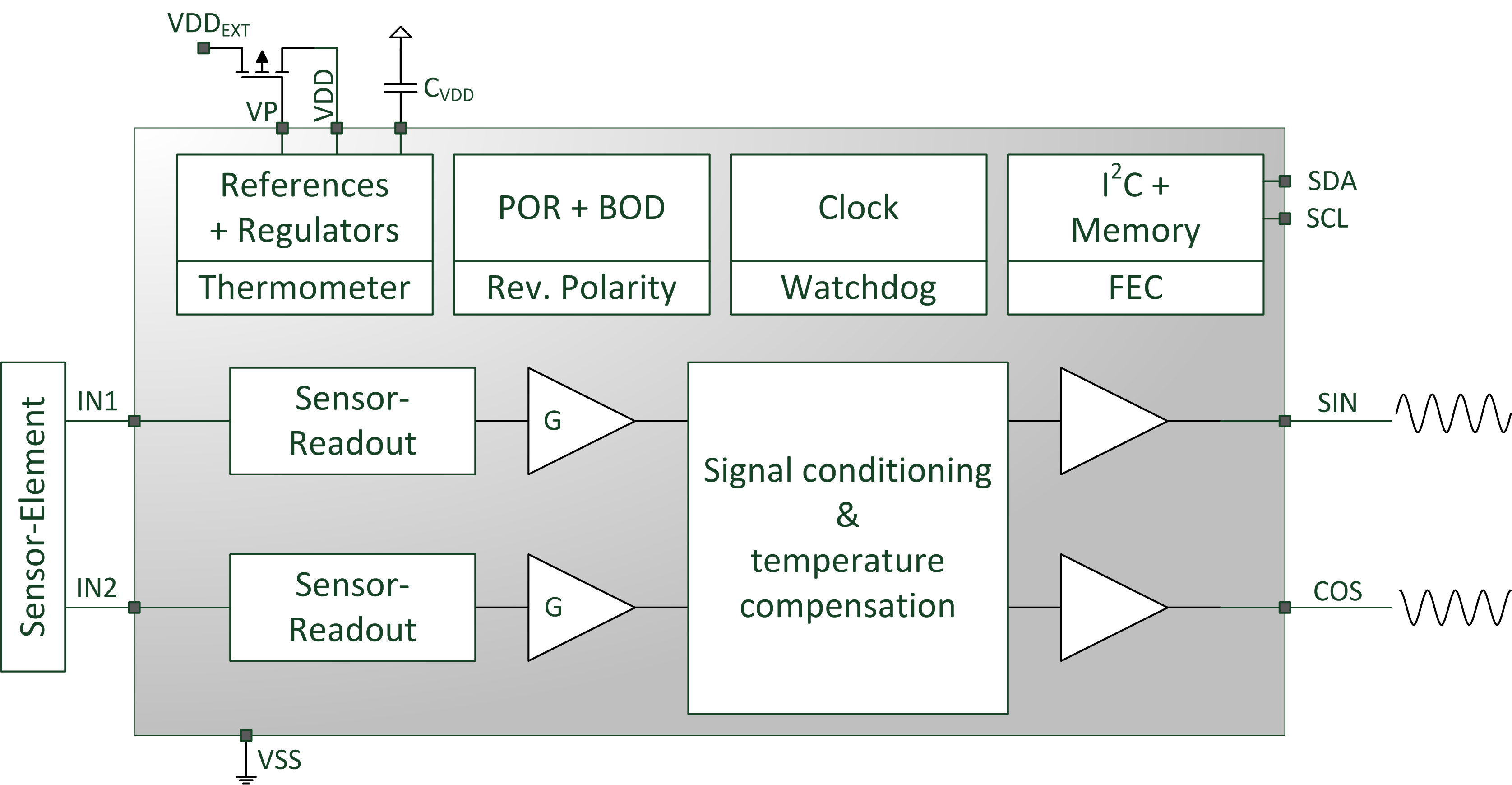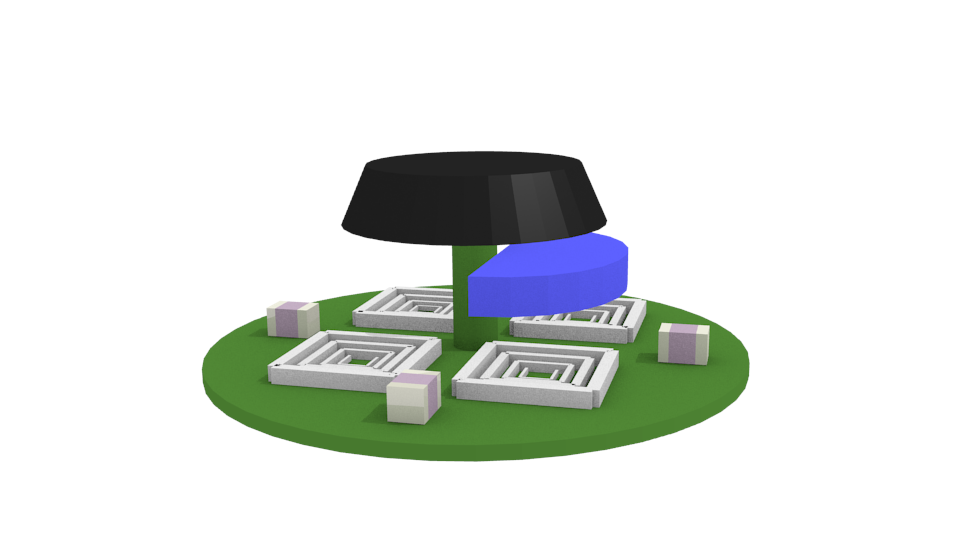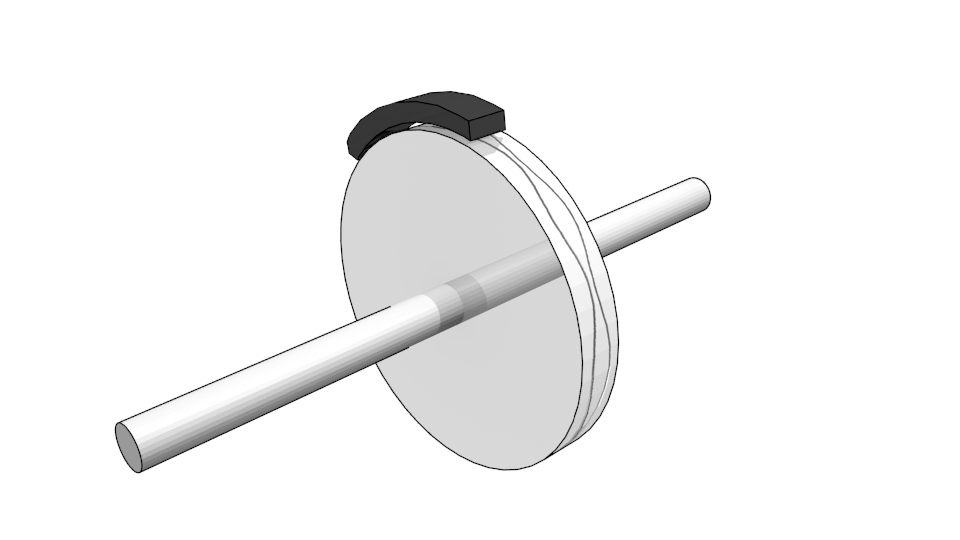Position sensor ASIC with ASIL functionality



The basic function of a position sensor is in detecting and processing measurement data based on the position of a moving object. Inductive position sensors measure the angular positions using the arising variations of the magnetic field amplitudes. These amplitudes are induced by, for example, shifts or rotations of the moving magnet. Disadvantages of this traditional solution are the costs for the magnet, the operating temperature limit and the sensitivity to magnetic stray fields.
The ASIC developed by Fraunhofer IMS can be applied in magnet-free, contactless, inductive position sensors. These sensors use the physical principles of the induction inside a wire loop and eddy currents to detect the position of an electroconductive target which glides or rotates over a set of receiver coils. The sensor itself consists of a structure of PCB coils and a target with specially formed layers from conductive material.
Every coil is part of the oscillating circuit which is stimulated by the high frequency sinus signal. The resulting magnetic field induces eddy currents inside the metallic target and the corresponding resulting opposing field reduces the inductance of the coil. Accordingly, both the amplitude of the oscillating circuit and the phase are changing. Depending on how the surface of the conductive material is influencing the coil, the described effect varies and a signal is emitted from the ASIC which is proportional to the surface of the conductive material.
A sensor element essentially consists of two coils that are each a part of an oscillating circuit. From the ASIC a phase difference between the two resonance signals is measured when the coils are asymetrically influenced by the conductive material of the target. The measured phase difference – and the resulting output signal – is insensitive towards the magnetic and electrical influences. Figure 1 shows the block diagram of the ASIC.
The ASIC (ASIL C) developed according to ISO 26262 / ISO 61508 contains diagnosis and redundance functionalities and can be applied both for linear movements and rotating sensors (see figures 2 and 3) in automotive, medical and consumer applications. The functionality of the ASIC can be adapted in large parts over a configuration interface and an integrated EEPROM to the special application area (e. g. frequency of the stimulating sinus signal, coil alignment, signal amplification, etc.).
